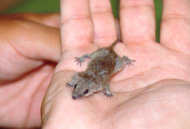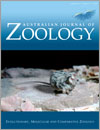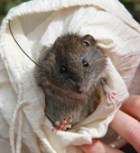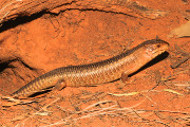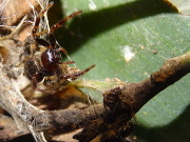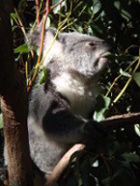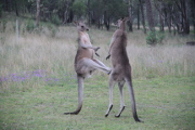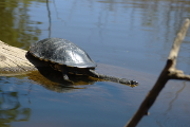Australian Journal of Zoology
Volume 64
Number 5 2016
Species recognition underpins all attempts to describe and conserve biodiversity. We used DNA, morphological and geographical data to clarify species boundaries and relationships in Planigale, a poorly studied group of small-bodied Australasian marsupials. Our results provide strong evidence for new planigale species and the partitioning of widespread taxa into geographically distinct evolutionary units.
Photo by G. Mifsud.
Forest birds in the Blue Mountains in the 1980s were found to be relatively little affected by fire regime variation. Stronger influences on bird abundance and diversity were tree height, rainforest vegetation and nectar-rich flowers. However, increasing fire severity, extent and frequency from climate change is an evolving threat.
We examined habitat selection by two rodent species in an alpine resort in Victoria. The broad-toothed rat (Mastacomys fuscus) and the bush rat (Rattus fuscipes) both selected for small woodland fragments within ski runs. Such fragments may provide important habitat and connectivity between larger habitat patches.
Photo by Desley Whisson.
We studied the life-history characteristics of the poorly known yakka skink, Egernia rugosa. Our findings suggest that these skinks form stable family units. Understanding which species exhibit group living and what life-history characteristics may be important for the maintenance and evolution of group living underpins our understanding of squamate reptile social behaviour.
Photo by Jon-Paul Emery.
Extended maternal care seems to be pre-conditional for the evolution of group-living in spiders, but it is poorly understood why care is exerted beyond the offspring’s potential independence. We investigated maternal care in Xysticus bimaculatus, and demonstrated crucial benefits for nutritionally independent offspring, mediated by extensive maternal provisioning and prey-sharing between siblings.
Photo by Marlis Dumke.
Koalas are model organisms for assessing past climate change via stable isotopes in tooth enamel, due to their restricted diet and limited drinking behaviour. Significant negative relationships between oxygen isotope values and both relative humidity and mean annual precipitation demonstrate their utility for assessing relative aridity today, and through time.
Photo by Larisa R. G. DeSantis.
Eastern grey kangaroos (Macropus giganteus) are a large, iconic macropod inhabiting eastern Australia. Microsatellite and mtDNA evidence collected from two populations in Queensland is presented here and lends support to male-biased dispersal in this species. This study demonstrates the importance of using multiple genetic markers to test for sex-biased dispersal.
Photo by Clementine Menz.
The effect of environmental flows (e-flows) on turtles remains largely unstudied. We opportunistically examined the effects of e-flows on eastern long-necked turtle (Chelodina longicollis) condition and abundance during drought. Our results provide preliminary evidence that e-flows may improve the condition of turtles occupying ephemeral floodplain habitats.
Photo by Gavin Currie.
